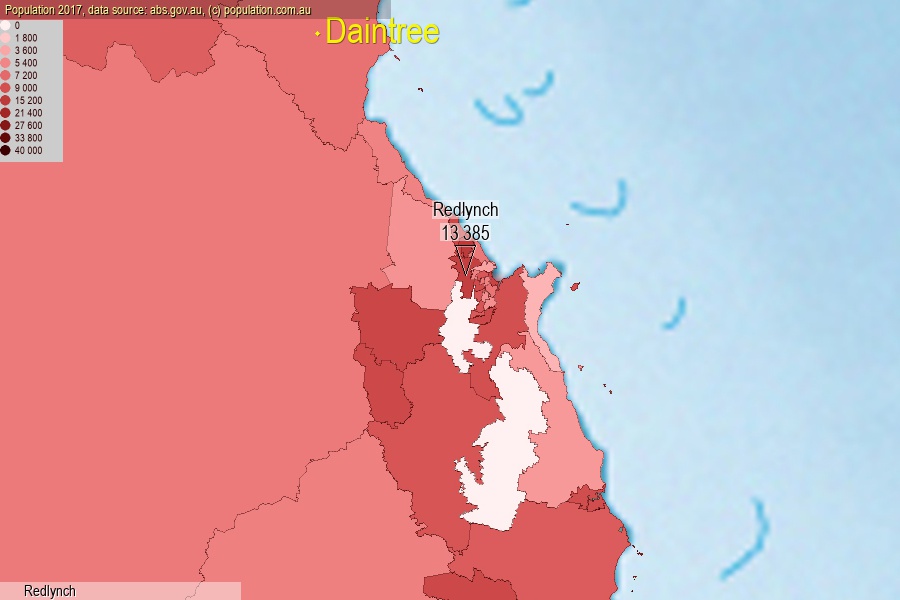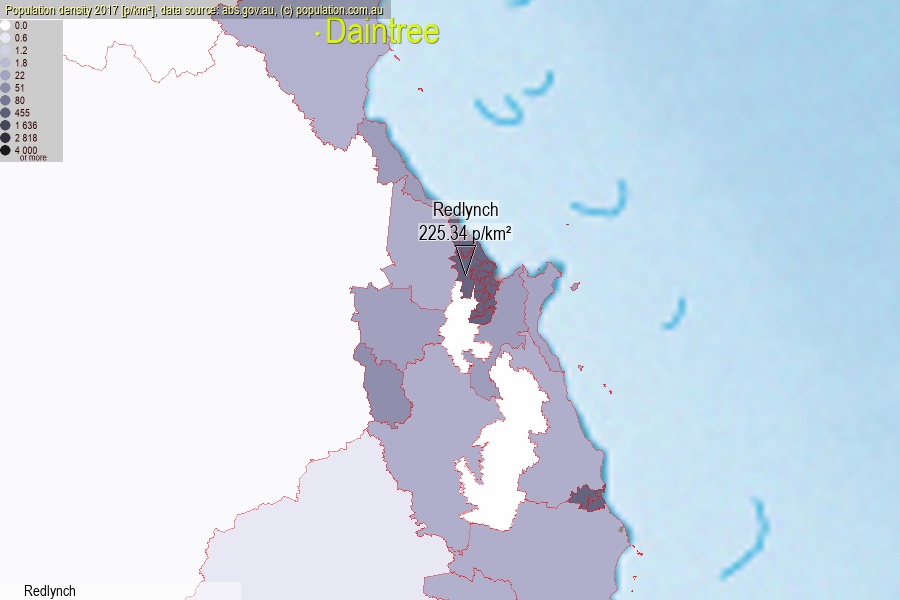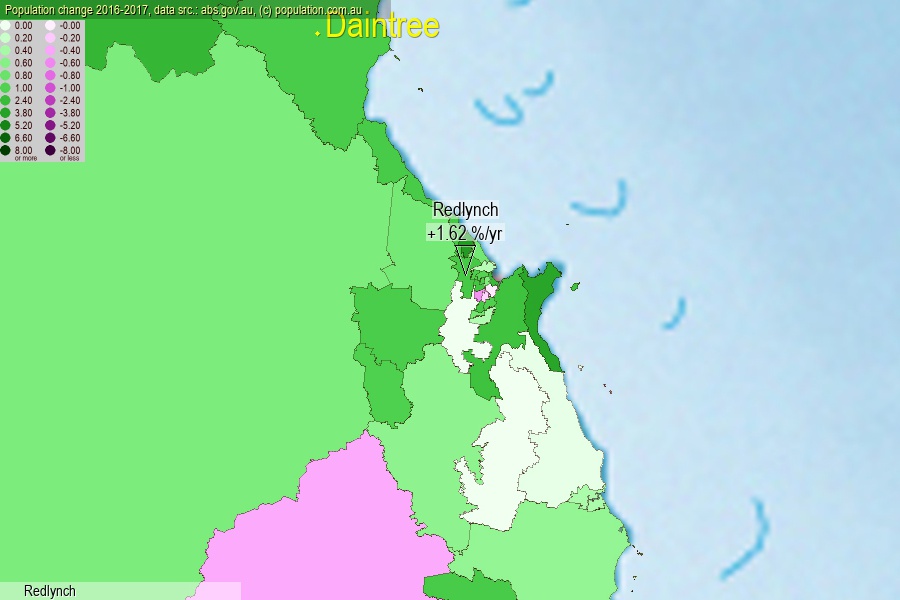 population.com.au
population.com.auLast official estimated population of Redlynch (as Statistical Area Level 2) was 13 385 people (on 2017-06-30)[2]. This was 0.05% of total Australian population and 0.268% of QLD population. Area of Redlynch is 59.40 km², in this year population density was 225.34 p/km² . If population growth rate would be same as in period 2016-2017 (+1.62%/yr), Redlynch population in 2025 would be 15 227. [0]



Click to enlarge. Redlynch is located in the center of the images.
Population [people], population density [p./km²] and population change [%/year] [2]
View borders » (new window) [4]
[1991-1992] +16.61 %/Yr.
[1992-1993] +17.57 %/Yr.
[1993-1994] +17.37 %/Yr.
[1994-1995] +10.97 %/Yr.
[1995-1996] +4.42 %/Yr.
[1996-1997] +3.43 %/Yr.
[1997-1998] +3.10 %/Yr.
[1998-1999] +5.27 %/Yr.
[1999-2000] +4.38 %/Yr.
[2000-2001] +1.70 %/Yr.
[2001-2002] +5.18 %/Yr.
[2002-2003] +6.39 %/Yr.
[2003-2004] +7.96 %/Yr.
[2004-2005] +9.30 %/Yr.
[2005-2006] +4.91 %/Yr.
[2006-2007] +6.75 %/Yr.
[2007-2008] +6.39 %/Yr.
[2008-2009] +5.64 %/Yr.
[2009-2010] +3.04 %/Yr.
[2010-2011] +2.15 %/Yr.
[2011-2012] +3.21 %/Yr.
[2012-2013] +1.92 %/Yr.
[2013-2014] +1.35 %/Yr.
[2014-2015] +1.68 %/Yr.
[2015-2016] +1.97 %/Yr.
[2016-2017] +1.62 %/Yr.
[0] Calculated with linear interpolation from officially estimated population
[1] Read more about SA2 and Australian Statistical Geography Standard (ASGS) on abs.gov.au
[2] Population data from Australian Bureau of Statistics (Population and density: 2017; change: 2016-2017)
[3] Digital Boundaries: Australian Statistical Geography Standard (ASGS) 2016.
[4] Border coordinates are simplifyed using Ramer-Douglas-Peucker algorithm.